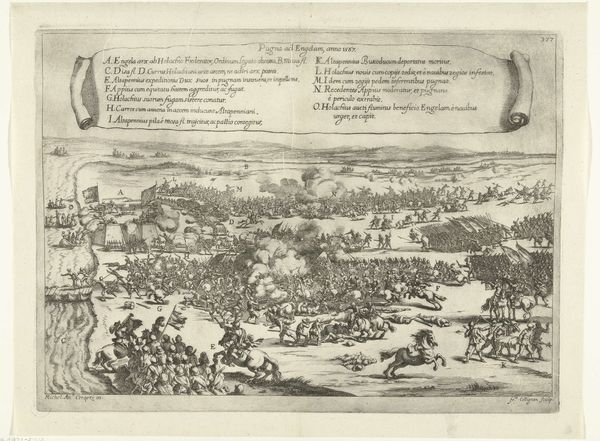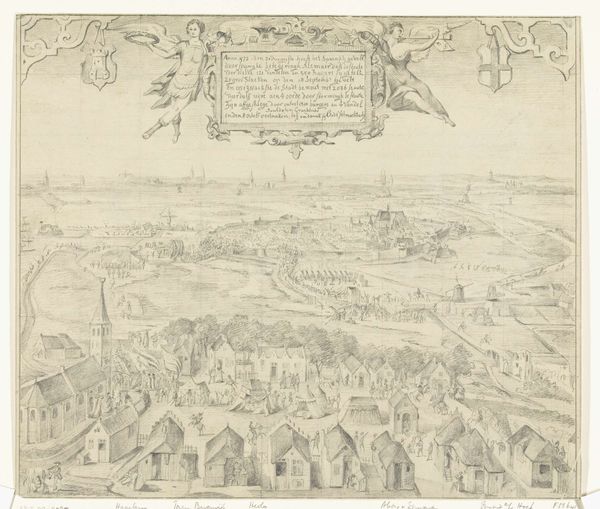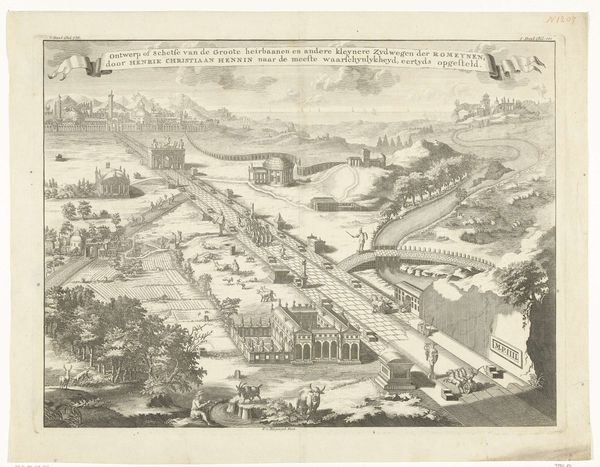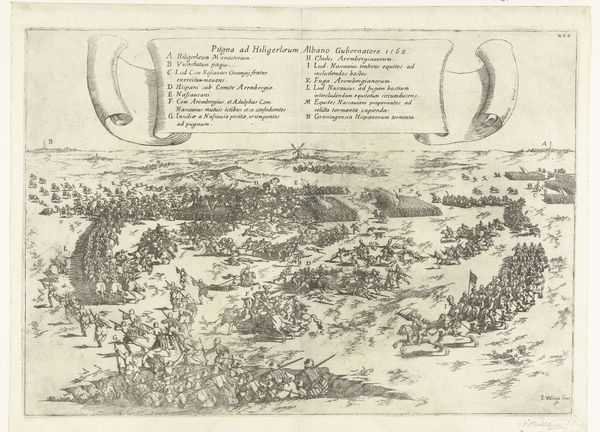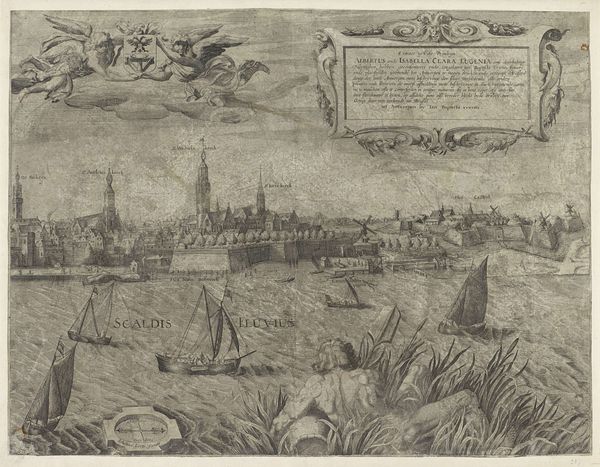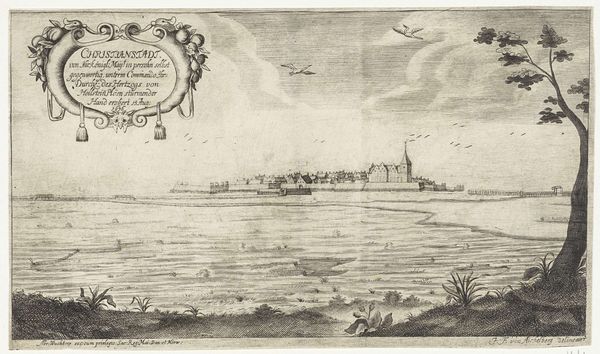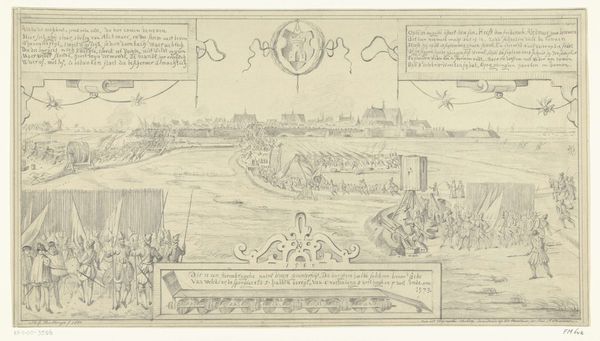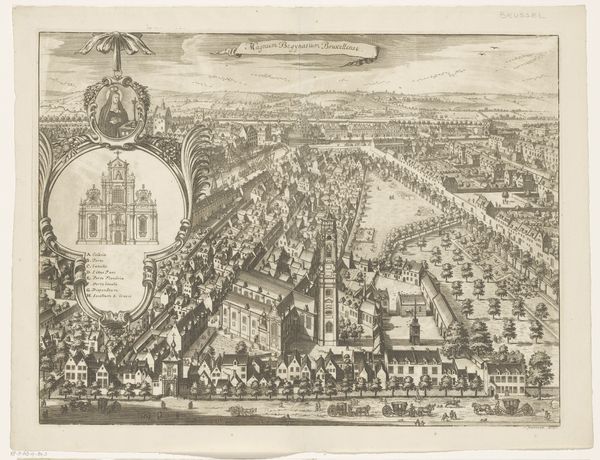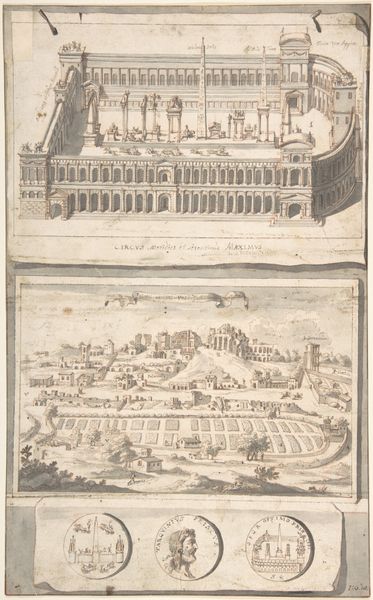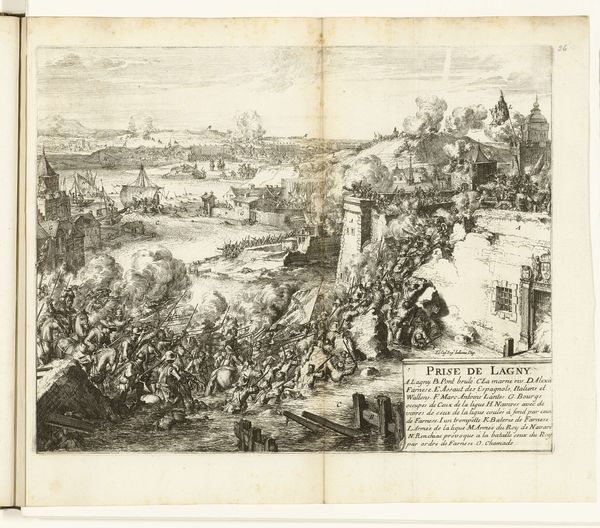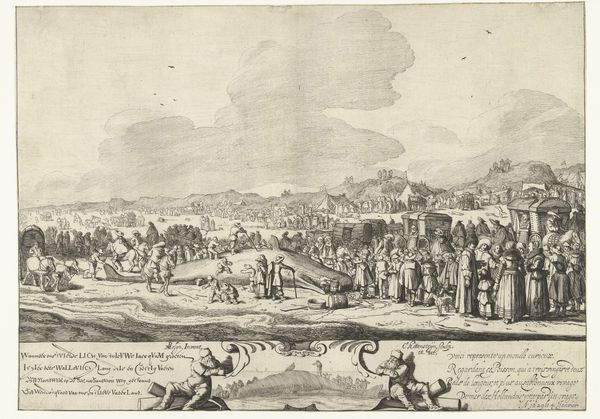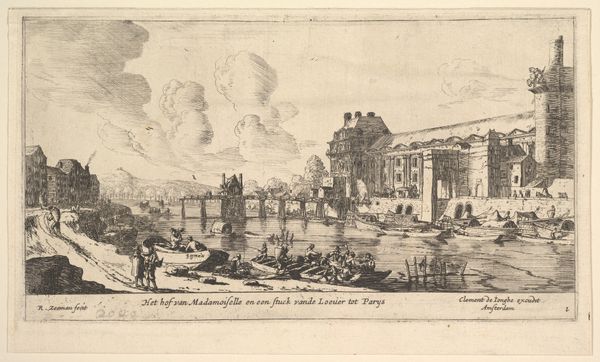
drawing, ink, pen
#
drawing
#
baroque
#
dutch-golden-age
#
pen sketch
#
landscape
#
ink
#
pen work
#
pen
#
cityscape
Dimensions: height 315 mm, width 420 mm
Copyright: Rijks Museum: Open Domain
Editor: Here we have Jan van Ossenbeeck's "Zomerhuis van Cunibert van Wenzelsberg," created in 1664 using pen and ink. It feels incredibly detailed, yet airy because of the lightness of the ink. What structural elements stand out to you? Curator: Immediately striking is the division of the composition: the almost neoclassical formality of the building offset by the fluid, active foreground and the curious cartouche above. Note how Ossenbeeck has structured the foreground's perspective, leading our eye inexorably towards the central edifice. Editor: Yes, the eye definitely travels! What do you make of the drawing style, this overall...sketchiness, for such a formal subject? Curator: Precisely. Consider the relationship between line quality and the intended subject. The pen work, with its varying thickness and density, defines form but also contributes a sense of immediacy. Is it a record, a preliminary design, or a finished artwork meant for display? Ossenbeeck presents contrasts. The idyllic image, though seemingly of its time, can transcend such cultural bounds as we study it today. How does the contrast shape your understanding of its meaning? Editor: I see what you mean; its incompleteness almost invites interaction. It's a study but feels accessible, less aloof. It highlights process rather than presentation. Curator: Indeed. And, the inclusion of the elaborate cartouche disrupts any conventional reading of pure representation; its formal language is yet another layer that speaks to structure and design. Do you see now the intention, or the effect of intentional design? Editor: Absolutely, thinking about it in terms of layers clarifies it. I came in thinking "landscape," but it is very thought out. Curator: Analyzing composition allows us to dissect and consider a work’s individual elements as they relate to the totality. It offers an insight that historical context alone might miss.
Comments
No comments
Be the first to comment and join the conversation on the ultimate creative platform.

